1. Can anyone become an affiliate marketer with Amazon?
What is Affiliate Marketing?
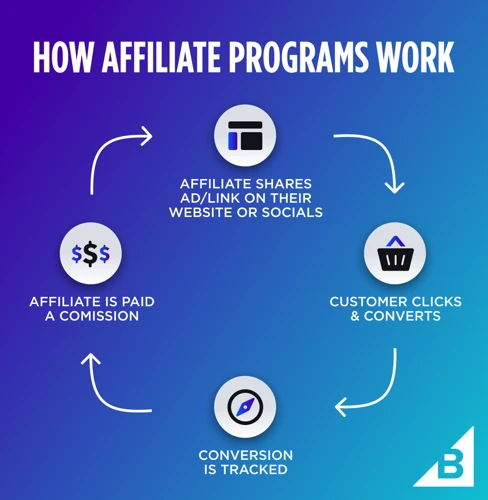
Affiliate marketing is a performance-based marketing strategy where affiliates earn a commission for promoting products or services of other companies. As an affiliate marketer, you act as a middleman between the merchant and the customer. Your role is to promote the merchant’s products or services through various marketing channels, such as your website, blog, social media platforms, or email marketing campaigns. When a customer makes a purchase through your unique affiliate link, you earn a commission on that sale. The commission rate varies depending on the affiliate program and the type of product being promoted.
One of the main advantages of affiliate marketing is that you don’t need to create your own products or handle inventory. Instead, you can focus on promoting products that align with your niche or target audience. This allows you to earn passive income by leveraging your online presence and influence. Affiliate marketing is a popular choice for many online entrepreneurs because it offers a low barrier to entry and the potential for high earnings. It’s a win-win situation for both the affiliate marketer and the merchant, as the marketer earns a commission for every sale generated, while the merchant benefits from increased brand exposure and sales.
Affiliate marketing can be done through various platforms and networks, such as Amazon Associates, which is one of the most popular affiliate programs. Amazon offers a wide range of products across different categories, making it an attractive option for affiliate marketers. By joining the Amazon Associates program, you can promote millions of products available on Amazon and earn up to 10% in advertising fees for qualifying purchases. Whether you’re a blogger, content creator, or social media influencer, affiliate marketing with Amazon can be a lucrative opportunity to monetize your online presence.
To succeed in affiliate marketing, it’s important to choose the right niche and target audience. By focusing on a specific niche, you can establish yourself as an authority in that area and attract a dedicated audience. Researching profitable niches and evaluating competition and demand are essential steps in selecting the right niche for your affiliate marketing business. Additionally, building a website or blog, creating engaging content, and implementing affiliate links are crucial for driving traffic and generating sales. Promoting your affiliate website through social media channels and utilizing paid advertising campaigns can further boost your earnings. By tracking and analyzing your performance, you can identify opportunities for optimization and maximize your earnings potential.
Affiliate marketing is a performance-based marketing strategy where affiliates earn a commission for promoting products or services of other companies. It offers a low barrier to entry and the potential for high earnings. Amazon affiliate marketing is a popular choice due to the wide range of products available and the potential for earning advertising fees. By choosing the right niche, building a website, creating engaging content, and promoting your affiliate website, you can succeed in the world of affiliate marketing with Amazon. So, let’s dive in and explore the step-by-step process of how to do affiliate marketing with Amazon.
Why Choose Amazon Affiliate Program?
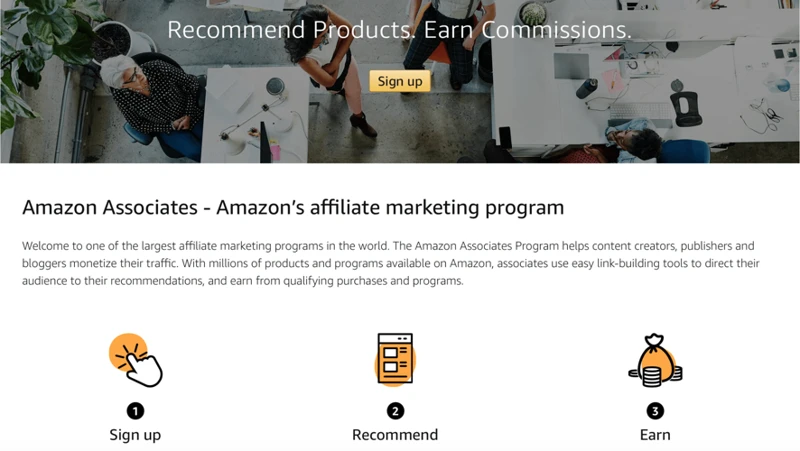
The Amazon Affiliate Program, also known as Amazon Associates, is a popular choice for affiliate marketers for several reasons. Firstly, Amazon is one of the largest e-commerce platforms in the world, offering a vast selection of products across various categories. This means that no matter what niche you choose, you can find relevant products to promote to your audience. Additionally, Amazon has a trusted and recognizable brand, which can help increase conversions and trust among your audience.
Another reason to choose the Amazon Affiliate Program is the competitive commission structure. Depending on the category of the product, you can earn commission rates ranging from 1% to 10% of the sale price. This can result in significant earnings, especially when promoting high-ticket items. Amazon also offers a 24-hour cookie duration, which means that if a customer clicks on your affiliate link and makes a purchase within 24 hours, you will still receive a commission, even if they don’t buy the product immediately.
The Amazon Affiliate Program provides access to advanced tracking and reporting tools. This allows you to monitor your performance, track sales, and analyze the effectiveness of your marketing efforts. By understanding your data, you can make informed decisions to optimize your campaigns and maximize your earnings.
Amazon’s reputation and customer service are top-notch, which can lead to higher conversion rates and customer satisfaction. When customers purchase products through your affiliate links, they can rely on Amazon’s reliable shipping and customer support. This can help build trust with your audience and increase the likelihood of repeat purchases.
Lastly, the Amazon Affiliate Program offers various promotional tools and resources to help you succeed as an affiliate marketer. You can choose from a wide range of ad formats, including text links, banners, and native shopping ads, to seamlessly integrate product recommendations into your content. Additionally, Amazon provides regular updates on new products, promotions, and marketing strategies to keep you informed and ahead of the competition.
The Amazon Affiliate Program is an excellent choice for affiliate marketers due to its extensive product selection, competitive commission rates, advanced tracking tools, reliable customer service, and promotional resources. Whether you’re a beginner or an experienced affiliate marketer, partnering with Amazon can open up a world of opportunities to monetize your online presence and earn passive income. So, if you’re considering getting started with affiliate marketing, the Amazon Affiliate Program is definitely worth considering.
Getting Started with Amazon Affiliate Marketing
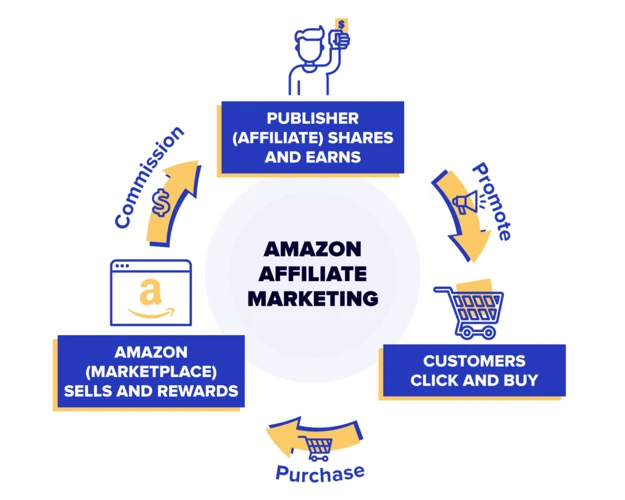
To get started with Amazon affiliate marketing, the first step is to sign up for the Amazon Associates program. This program allows you to earn commissions by promoting products available on Amazon. To sign up, you will need to have an existing Amazon account. If you don’t have one, you can easily create a new account on the Amazon website.
Once you have an Amazon account, go to the Amazon Associates homepage and click on the “Join Now for Free” button. You will be prompted to enter your Amazon login credentials. After logging in, you will need to provide some basic information about yourself, such as your name, website or blog URL, and the type of content you plan to create.
Next, you will need to provide your preferred store ID, which is a unique identifier for your affiliate account. This ID will be used to track your referrals and commissions. You can choose a custom store ID or use the automatically generated one. It’s recommended to choose a store ID that is relevant to your niche or brand.
Once you have completed the sign-up process, you will need to agree to the Amazon Associates Operating Agreement. This agreement outlines the terms and conditions of the affiliate program, including the rules and regulations you must follow as an affiliate marketer.
After agreeing to the Operating Agreement, you will gain access to your Amazon Associates dashboard. This dashboard provides you with tools and resources to manage your affiliate account, track your earnings, and generate affiliate links for the products you want to promote.
Before you start promoting products, it’s important to set up your payment and tax information in the Amazon Associates dashboard. This ensures that you will receive your commissions on time and comply with tax requirements.
Now that you have successfully signed up for the Amazon Associates program and set up your account, you are ready to start promoting products and earning commissions. In the next sections, we will discuss how to choose the right niche, conduct product research, build a website or blog, create engaging content, and effectively promote your affiliate website. So, let’s continue our journey into the world of Amazon affiliate marketing and take your online business to the next level!
Choosing the Right Niche

Choosing the right niche is a crucial step in affiliate marketing with Amazon. A niche is a specific topic or area of interest that you will focus on with your affiliate marketing efforts. It’s important to select a niche that aligns with your interests and expertise, as this will make it easier for you to create engaging content and build credibility with your audience. Conducting thorough research on profitable niches is essential to identify areas with high demand and potential for growth. By evaluating competition and demand, you can determine whether there is a viable market for your chosen niche. Additionally, consider the level of competition in the niche and the potential for earning commissions. Remember, the more specialized and targeted your niche is, the easier it will be to attract a dedicated audience and stand out from the competition. So take the time to carefully choose a niche that you are passionate about and that has the potential for profitability. Once you have chosen your niche, you can move forward with building your website or blog and creating valuable content to attract your target audience.
Researching Profitable Niches
When it comes to affiliate marketing, choosing the right niche is crucial for the success of your business. Researching profitable niches involves identifying areas of interest where there is a high demand for products or services. One way to start your research is by brainstorming topics that you are passionate about or have knowledge and expertise in. This will not only make it easier for you to create engaging content but also help you connect with your target audience.
Once you have a list of potential niches, it’s time to evaluate their profitability. One way to do this is by conducting keyword research. Use tools like Google Keyword Planner or SEMrush to identify keywords related to your niche and analyze their search volume. Look for keywords with high search volume and low competition as they indicate a higher demand for information or products in that niche.
Another important aspect to consider is the competition within the niche. Analyze the websites, blogs, and social media accounts of your potential competitors. Look for their strengths, weaknesses, and the unique selling points that set them apart. This will help you understand the market landscape and find opportunities to differentiate yourself.
Additionally, consider the profitability of the products or services associated with the niche. Look for products with higher price points or recurring commissions as they can significantly impact your earnings. Evaluate the affiliate programs available for those products and compare their commission rates, cookie duration, and conversion rates.
Remember to also take into account your own interests and passions. It’s essential to choose a niche that aligns with your values and allows you to create valuable content that resonates with your audience. Building a successful affiliate marketing business requires dedication and consistency, so being passionate about your niche will make the journey more enjoyable.
Once you have completed your research, narrow down your options to a few profitable niches that you feel confident about. This will serve as the foundation for your affiliate marketing business.
Evaluating Competition and Demand
When it comes to affiliate marketing, evaluating competition and demand is a crucial step in choosing the right niche for your business. Here are some strategies to help you assess competition and demand effectively:
1. Conduct keyword research: Use keyword research tools like Google Keyword Planner or SEMrush to identify relevant keywords and determine their search volume. Look for keywords with high search volume and low competition to target in your affiliate marketing efforts.
2. Analyze competitor websites: Take a look at websites or blogs in your potential niche that are already ranking well. Analyze their content, the products they promote, and their overall marketing strategy. This will give you insights into what is currently working in that niche and help you identify any gaps or opportunities.
3. Check affiliate program popularity: Look for affiliate programs or networks that are popular in your chosen niche. This indicates that there is a demand for products or services in that niche, and it may be easier to find suitable products to promote.
4. Consider product pricing and commission rates: Evaluate the pricing and commission rates of products in your niche. Higher-priced products with higher commission rates may be more lucrative, but you should also consider the demand and affordability of these products for your target audience.
5. Assess market saturation: Determine how saturated the market is by researching the number of competitors in your chosen niche. If the market is highly competitive, it may be challenging to stand out and gain traction. However, a moderately competitive market can indicate a healthy demand for products.
6. Analyze social media engagement: Look for social media platforms relevant to your niche and analyze the engagement on posts related to your potential affiliate products. High engagement, such as likes, comments, and shares, indicates a strong interest in those products.
By thoroughly evaluating competition and demand, you can make informed decisions about the niche you choose for your affiliate marketing business. Remember that finding a balance between low competition and sufficient demand is key to maximizing your chances of success.
Creating an Amazon Affiliate Account
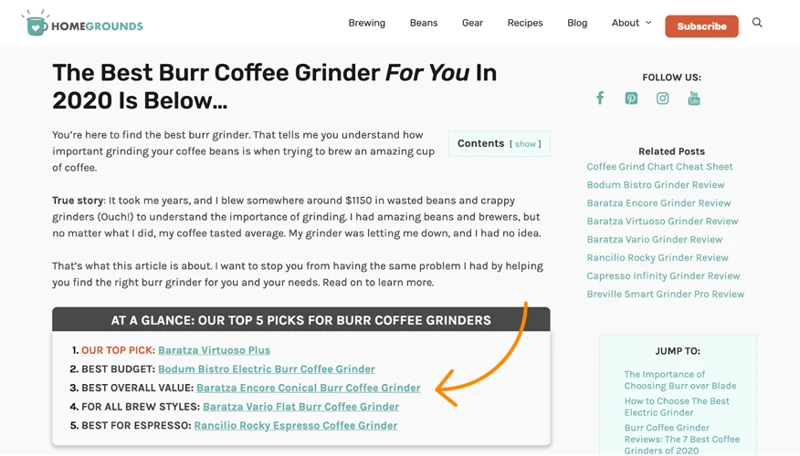
To start your journey in affiliate marketing with Amazon, the first step is to create an Amazon affiliate account. This account will give you access to the Amazon Associates program, where you can earn commissions by promoting products on Amazon. To sign up, visit the Amazon Associates website and click on the “Join Now for Free” button. You will need to provide some basic information, such as your website URL, preferred store ID, and relevant payment information. Once you have completed the sign-up process and your account is approved, you can start exploring the vast selection of products on Amazon and generating affiliate links to promote on your website or blog. Creating an Amazon affiliate account is the foundation for your affiliate marketing journey, allowing you to earn commissions for every sale made through your affiliate links.
Signing Up for Amazon Associates
Signing up for Amazon Associates is the first step to start your affiliate marketing journey with Amazon. To become an Amazon affiliate, follow these steps:
1. Visit the Amazon Associates website and click on the “Join Now for Free” button.
2. Log in with your existing Amazon account or create a new one if you don’t have an account yet.
3. Provide your account information, including your name, email address, and password.
4. Fill in your website and app information. If you don’t have a website or app, you can provide details on how you plan to promote Amazon products.
5. Enter your preferred store ID, which will be included in your affiliate links.
6. Read and accept the Amazon Associates Operating Agreement, which outlines the terms and conditions of the program.
7. Complete the identity verification process by providing your phone number and verifying it through a call or text message.
8. Enter your payment and tax information. Amazon offers several payment options, including direct deposit, Amazon gift cards, and checks.
9. Once you’ve completed the registration process, you’ll receive an email confirmation. Your application will be reviewed by Amazon, and once approved, you can start promoting Amazon products and earning commissions.
It’s important to note that Amazon has specific guidelines and policies that affiliates must adhere to. Ensure that you familiarize yourself with the Amazon Associates Operating Agreement and comply with their rules to maintain your affiliate status.
By signing up for Amazon Associates, you gain access to a wide range of products to promote and earn commissions on. Whether you have a website, blog, or social media platform, becoming an Amazon affiliate opens up opportunities to monetize your online presence and earn passive income. So, take the first step and sign up for Amazon Associates to kickstart your affiliate marketing journey with Amazon.
Setting Up Your Account
Setting up your Amazon Associates account is a crucial step in getting started with affiliate marketing. Here is a step-by-step guide on how to set up your account:
1. Visit the Amazon Associates website and click on the “Join Now for Free” button.
2. Sign in with your existing Amazon account or create a new one.
3. Fill out the necessary information, including your name, address, and website or mobile app details. If you don’t have a website or mobile app, you can provide information about your intended promotional methods.
4. Enter your preferred store ID, which will be used to create your unique affiliate tracking ID.
5. Specify how you want to generate referrals. You can choose from three options: website, mobile app, or both.
6. Complete the profile section by providing additional information about your website or mobile app, such as the topics you plan to cover and the target audience.
7. Read and agree to the Amazon Associates Operating Agreement and Program Policies.
8. Provide your payment and tax information. You will need to provide your preferred payment method and tax information to receive your earnings.
9. Submit your application for review. It may take up to 48 hours for Amazon to review and approve your application.
Once your application is approved, you can start promoting Amazon products and earning commissions. Make sure to familiarize yourself with Amazon’s guidelines and policies to ensure compliance. You can access various tools and resources in your Amazon Associates account to help optimize your affiliate marketing efforts.
Setting up your Amazon Associates account is a straightforward process that allows you to start monetizing your website or mobile app with affiliate marketing. By following these steps, you’ll be on your way to earning commissions through the Amazon Associates program.
Product Research and Selection

When it comes to affiliate marketing with Amazon, product research and selection play a crucial role in your success. To maximize your earnings, it’s important to identify high-demand products that are likely to attract customers. One way to do this is by researching popular trends and analyzing market demand. Look for products that are in high demand and have a consistent track record of sales. Additionally, analyzing product reviews and ratings can provide valuable insights into the quality and popularity of a product. By selecting products that have positive reviews and high ratings, you can increase the likelihood of generating sales. It’s also important to consider the relevance of the product to your target audience and niche. Choose products that align with your website or blog’s content and cater to the interests and needs of your audience. By conducting thorough product research and selection, you can ensure that you’re promoting high-quality products that have the potential to generate significant commissions.
Identifying High-Demand Products
Identifying high-demand products is a crucial step in affiliate marketing with Amazon. By choosing products that are in high demand, you increase the likelihood of generating sales and earning commissions. Here are some strategies to help you identify high-demand products:
1. Research Best Sellers: Amazon provides a list of best-selling products in different categories. These products are popular among customers and have a high demand. Browse through the best sellers list and identify products that align with your niche.
2. Check Amazon’s Movers and Shakers: The Movers and Shakers section on Amazon showcases products that have experienced a significant increase in sales rank over the past 24 hours. This indicates a surge in demand for those products. Keep an eye on this section to spot emerging trends and high-demand products.
3. Read Customer Reviews: Customer reviews can provide valuable insights into the popularity of a product. Look for products with a high number of positive reviews, as it indicates customer satisfaction and a strong demand for the product.
4. Use Keyword Research Tools: Keyword research tools like Google Keyword Planner or SEMrush can help you identify popular search terms related to your niche. Look for keywords with a high search volume, as it indicates a strong demand for products associated with those keywords.
5. Analyze Competitor Websites: Take a look at websites or blogs in your niche that are already successful in affiliate marketing. See which products they are promoting and the level of engagement those products receive. This can give you an idea of high-demand products in your niche.
Remember, it’s not just about identifying high-demand products, but also ensuring that they align with your target audience and niche. By choosing products that are relevant to your audience’s needs and interests, you increase the likelihood of driving conversions and earning commissions. So take the time to research and identify high-demand products that will resonate with your audience.
Now that you have identified high-demand products, the next step is to analyze product reviews and ratings to ensure you are promoting quality products to your audience.
Analyzing Product Reviews and Ratings
When it comes to affiliate marketing with Amazon, analyzing product reviews and ratings is a crucial step in selecting the right products to promote. Product reviews and ratings provide valuable insights into the quality, popularity, and customer satisfaction of a particular product. By analyzing these reviews and ratings, you can make informed decisions about which products to promote and which ones to avoid.
Start by browsing through the customer reviews on the product listing page. Look for reviews that provide detailed information about the product, its features, and its performance. Pay attention to both positive and negative reviews, as they can give you a well-rounded perspective on the product. Focus on reviews that are recent and from verified purchasers, as they are more likely to be genuine and reliable.
In addition to reading the reviews, take note of the overall rating of the product. Amazon uses a star rating system, with five stars being the highest rating. A high rating indicates that customers are generally satisfied with the product, while a low rating may indicate potential issues or drawbacks.
When analyzing product reviews and ratings, look for common themes or trends. Are customers consistently praising certain features or benefits of the product? Are there any recurring complaints or concerns? This information can help you understand the strengths and weaknesses of the product and determine whether it aligns with your target audience’s needs and preferences.
It’s also important to consider the number of reviews a product has. Products with a large number of reviews are likely to have more credibility and reflect a higher level of customer engagement. However, don’t solely rely on the number of reviews as an indicator of a product’s quality. Sometimes, even products with fewer reviews can be hidden gems that offer great value to customers.
By thoroughly analyzing product reviews and ratings, you can gain valuable insights into the products you plan to promote as an Amazon affiliate. This information will help you make informed decisions and choose products that have a higher likelihood of generating sales and earning commissions. So, take the time to dive deep into the customer feedback and ratings, and use this knowledge to your advantage in your affiliate marketing journey with Amazon.
Building a Website or Blog
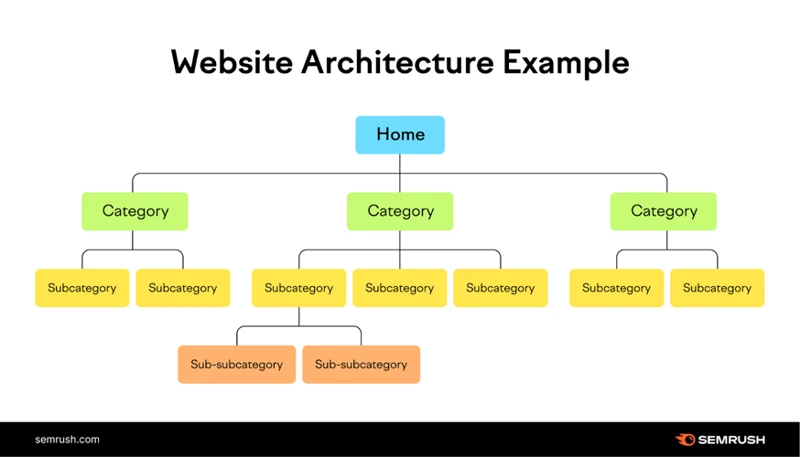
Building a website or blog is an essential step in establishing your presence as an affiliate marketer with Amazon. Your website or blog will serve as a platform to showcase the products you are promoting and provide valuable content to your audience. When building your website or blog, it’s important to choose a domain name that is relevant to your niche and easy for visitors to remember. Additionally, you will need to select a reliable hosting provider to ensure your website is always accessible. Once your website is set up, it’s crucial to optimize it for SEO by incorporating relevant keywords, meta tags, and high-quality content. This will help improve your website’s visibility in search engine results and attract organic traffic. By providing valuable and engaging content, you can establish trust with your audience and encourage them to click on your affiliate links. So, take the time to build a professional and user-friendly website or blog that will effectively promote your affiliate products and drive conversions.
Choosing a Domain Name and Hosting
When it comes to choosing a domain name and hosting for your affiliate marketing website, it’s important to make strategic decisions that align with your brand and niche. Your domain name should be memorable, relevant, and easy to spell. It’s best to choose a domain name that reflects the products or services you will be promoting. For example, if you are focused on reviewing fitness equipment, a domain name like “FitGearReviews.com” would be more relevant than a generic name.
When selecting a hosting provider, there are several factors to consider. First, you’ll want to ensure that the hosting provider offers reliable and secure hosting services. Look for providers that have a good track record of uptime and provide robust security measures to protect your website and customer data. Additionally, consider the scalability of the hosting plan, as your website may grow over time and require more resources.
There are many hosting providers available, but a popular and reliable option is Bluehost. They offer affordable hosting plans with excellent customer support and a user-friendly interface. Bluehost also provides a free domain name for the first year, which can save you some extra money.
Once you have chosen a domain name and hosting provider, you will need to connect the two. Most hosting providers have a simple process for connecting your domain name to your hosting account. This typically involves updating the domain’s DNS settings to point to the hosting provider’s nameservers. The exact steps may vary depending on your hosting provider, so be sure to follow their instructions or reach out to their support team for assistance.
Choosing the right domain name and hosting provider is an important step in building a successful affiliate marketing website. A well-chosen domain name that reflects your niche and a reliable hosting provider will provide a solid foundation for your online business. So take your time, do your research, and make informed decisions when selecting your domain name and hosting provider.
For more information on how to start an affiliate marketing blog, check out our comprehensive guide on “How to Start an Affiliate Marketing Blog“. This guide will provide you with step-by-step instructions on everything you need to know to launch your own successful affiliate blog.
Optimizing Your Website for SEO
Optimizing your website for SEO (Search Engine Optimization) is crucial for improving your visibility in search engine results and attracting organic traffic to your affiliate website. Here are some key steps to optimize your website for SEO:
1. Conduct keyword research: Identify relevant keywords that are frequently searched by your target audience. Use keyword research tools like Google Keyword Planner or SEMrush to find high-volume keywords with low competition. Incorporate these keywords into your website’s content, meta tags, headings, and URLs.
2. Create unique and engaging content: Develop high-quality content that provides value to your readers. Write informative blog posts, product reviews, and comparison articles that are relevant to your niche. Ensure your content is well-structured with proper headings, subheadings, and bullet points for readability.
3. Optimize your website’s loading speed: Improve your website’s speed by optimizing images, minifying CSS and JavaScript files, and utilizing caching techniques. A fast-loading website enhances user experience and improves your search engine rankings.
4. Optimize meta tags and descriptions: Craft compelling meta titles and descriptions that accurately describe the content of each page. Include relevant keywords in these tags to improve your website’s visibility in search engine results.
5. Build high-quality backlinks: Earn backlinks from reputable websites in your niche to increase your website’s authority. Reach out to other bloggers or website owners to collaborate on guest posts or link exchanges. Focus on acquiring natural, organic backlinks to improve your search engine rankings.
6. Utilize internal linking: Interlink your website’s pages to guide users and search engines through your content. Link relevant keywords or phrases to other related articles or product pages within your website. Internal linking helps search engines understand the structure and relevance of your website’s content.
7. Optimize your website for mobile devices: With the increasing use of mobile devices, it’s essential to have a responsive website design. Ensure your website is mobile-friendly and provides a seamless browsing experience across different devices.
By optimizing your website for SEO, you can increase your chances of ranking higher in search engine results, attract organic traffic, and ultimately boost your affiliate marketing earnings. Remember to regularly monitor your website’s performance using analytics tools and make necessary adjustments to improve your SEO strategy over time.
Creating Engaging Content

Creating engaging content is a crucial aspect of successful affiliate marketing with Amazon. To attract and retain your audience, it’s important to provide valuable and informative content that resonates with them. One effective strategy is to write product reviews and comparisons, highlighting the features, benefits, and drawbacks of the products you’re promoting. This helps your audience make informed purchasing decisions and builds trust in your recommendations. Additionally, offering valuable tips and advice related to your niche can position you as an authority and keep your audience engaged. By incorporating relevant keywords and optimizing your content for SEO, you can increase your visibility in search engine results and attract organic traffic to your website or blog. Don’t forget to include your affiliate links strategically within the content to drive conversions. So, whether you’re sharing your personal experiences, providing expert advice, or creating informative guides, focus on creating engaging content that adds value to your audience’s lives.
Writing Product Reviews and Comparisons
Writing product reviews and comparisons is an essential aspect of affiliate marketing with Amazon. When potential customers are considering purchasing a product, they often turn to reviews to gather more information and make an informed decision. As an affiliate marketer, you can provide valuable insights and recommendations through your reviews and comparisons to help your audience make a purchase.
To write effective product reviews, start by selecting products that are relevant to your niche and have a high demand. Research the product thoroughly, gathering information about its features, benefits, and any potential drawbacks. Use this information to create an honest and unbiased review that highlights the product’s strengths and weaknesses.
Incorporate personal experiences and anecdotes to make your review more relatable and authentic. Share your own insights and opinions on the product, emphasizing its usefulness and value to your readers. Be sure to include any relevant images or videos to enhance the visual appeal of your review.
When writing product comparisons, choose two or more similar products that cater to the same audience. Compare their features, pricing, and overall performance to help your readers make a well-informed decision. Highlight the unique selling points of each product and explain how they differ from one another.
While writing your reviews and comparisons, it’s important to keep your audience’s interests in mind. Focus on addressing their pain points, answering their questions, and providing solutions to their problems. Use persuasive language and compelling arguments to encourage your readers to take action and make a purchase through your affiliate links.
Remember to disclose your affiliate relationship with Amazon in your reviews and comparisons. This builds trust with your audience and ensures transparency in your recommendations. It’s also a requirement by the Federal Trade Commission (FTC) for affiliate marketers.
To optimize your reviews for search engines, incorporate relevant keywords throughout your content. This will help your reviews rank higher in search engine results and attract organic traffic to your website. Additionally, consider including a call-to-action at the end of your review, encouraging readers to click on your affiliate links and make a purchase.
By writing informative and persuasive product reviews and comparisons, you can establish yourself as a trusted authority in your niche and increase your chances of generating sales through your Amazon affiliate links. So, start crafting compelling content that will engage your audience and drive conversions.
For more information on how to promote your affiliate marketing business on social media platforms like Instagram or TikTok, check out our articles on how to do affiliate marketing on Instagram or how to do affiliate marketing on TikTok.
Offering Valuable Tips and Advice
When creating engaging content for your affiliate website, it’s important to offer valuable tips and advice to your audience. By providing useful information and insights, you can establish yourself as a trusted authority in your niche and build credibility with your readers. Here are some effective strategies for offering valuable tips and advice:
1. Research and understand your target audience: Before creating content, take the time to research and understand the needs, preferences, and pain points of your target audience. This will help you tailor your tips and advice to address their specific concerns and provide solutions that resonate with them.
2. Stay up-to-date with industry trends and developments: To offer valuable tips and advice, it’s essential to stay informed about the latest trends and developments in your niche. This allows you to provide timely and relevant information to your audience, positioning yourself as a knowledgeable resource.
3. Provide actionable and practical tips: Your tips and advice should be actionable and practical, offering clear steps or strategies that your audience can implement. Avoid generic or vague advice and instead focus on providing specific and detailed guidance that can yield tangible results.
4. Use personal anecdotes and case studies: Sharing personal anecdotes and case studies can make your tips and advice more relatable and impactful. By illustrating how your suggestions have helped you or others in real-life situations, you can demonstrate the value and effectiveness of your recommendations.
5. Incorporate visuals and multimedia: Visual elements such as images, infographics, or videos can enhance the effectiveness of your tips and advice. Visuals can help clarify complex concepts, engage your audience, and make your content more visually appealing and shareable.
6. Encourage audience interaction and feedback: Foster a sense of community and engagement by encouraging your audience to interact with your content. Invite them to share their experiences, ask questions, and provide feedback. This not only helps you better understand their needs but also creates a sense of trust and loyalty.
By offering valuable tips and advice in your content, you can attract and retain a loyal audience, driving more traffic to your affiliate website and increasing the likelihood of conversions. Remember to consistently provide high-quality, informative content that adds value to your readers’ lives. With time and dedication, your affiliate marketing efforts can thrive, and you can enjoy the rewards of a successful online business.
Implementing Affiliate Links

Implementing affiliate links is an essential step in affiliate marketing with Amazon. There are various ways to incorporate these links into your content and increase the chances of earning commissions. One method is to use text links, which are hyperlinks embedded within your written content. These links can be strategically placed within product reviews, comparisons, or blog posts to direct readers to the Amazon product page. Another option is to utilize banners, which are graphical ads that can be placed on your website or blog. Banners can be customized to match the design of your site and attract the attention of visitors. Additionally, native shopping ads can be implemented to seamlessly integrate product recommendations within your content. These ads are automatically generated based on the user’s browsing history and can be placed within blog posts or sidebar sections. By strategically implementing these affiliate links, you can increase the likelihood of generating sales and earning commissions through your Amazon affiliate marketing efforts.
Using Text Links and Banners
Using text links and banners is an effective way to incorporate affiliate links into your website or blog. Text links are simple hyperlinks that you can insert within your content or product reviews. These links are typically embedded within relevant anchor text, such as the name of the product or a specific keyword. By highlighting the anchor text and adding your affiliate link, you can direct your audience to the product page on Amazon.
Banners, on the other hand, are graphical advertisements that you can place on your website or blog. Amazon provides a wide variety of banner designs and sizes to choose from. You can select a banner that matches the layout and style of your website, ensuring a seamless integration. When a visitor clicks on the banner, they will be redirected to the corresponding product page on Amazon, and you will earn a commission if they make a purchase.
When using text links and banners, it’s essential to strategically place them within your content. Make sure to choose relevant products that align with your niche and target audience. Incorporate text links naturally within your product reviews, comparisons, or informational articles. This allows your audience to easily access the products you recommend and increases the likelihood of them making a purchase.
Similarly, banners should be placed in prominent locations on your website where they can grab the attention of your visitors. Consider placing them above the fold or in the sidebar for maximum visibility. Experiment with different banner placements and designs to determine which ones generate the most clicks and conversions.
To track the performance of your text links and banners, Amazon provides reporting tools that allow you to monitor clicks, conversion rates, and earnings. This data can help you optimize your affiliate marketing strategy and make informed decisions regarding your promotional efforts.
Remember, the key to effective affiliate marketing is to provide value to your audience. Make sure the products you promote are relevant and genuinely beneficial to your readers. By using text links and banners strategically, you can seamlessly integrate affiliate links into your content and increase your chances of earning commissions through the Amazon Associates program.
Incorporating Native Shopping Ads
Incorporating Native Shopping Ads is a highly effective way to monetize your affiliate website and increase your earnings through Amazon. Native Shopping Ads are dynamic ad units that blend seamlessly with your website’s content, making them appear more natural and less intrusive to your visitors. These ads are designed to match the look and feel of your website, providing a seamless user experience.
There are three types of Native Shopping Ads that you can incorporate into your website:
1. Recommendation Ads: These ads display personalized product recommendations based on the visitor’s browsing history and shopping preferences. They are highly targeted and can significantly increase the chances of conversion. You can choose to display these ads as grids or carousels, depending on your website’s layout.
2. Search Ads: With search ads, you can allow visitors to search for products directly on your website. When a visitor enters a search term, relevant product listings from Amazon will be displayed. If a visitor makes a purchase through these search ads, you earn a commission.
3. Custom Ads: Custom ads allow you to handpick specific products to promote on your website. You can choose from a wide variety of ad formats, such as single product displays, multi-product displays, or product grids. This gives you more control over the products you showcase and can help you align them with your content and target audience.
To incorporate Native Shopping Ads into your website, follow these steps:
1. Sign in to your Amazon Associates account and navigate to the Native Shopping Ads tab.
2. Choose the type of ad unit you want to create: Recommendation Ads, Search Ads, or Custom Ads.
3. Customize the ad unit by selecting the size, layout, and colors that best match your website’s design.
4. Generate the ad code and copy it.
5. Paste the ad code into the HTML or widget area of your website where you want the ads to appear.
6. Save and publish your changes.
By incorporating Native Shopping Ads into your affiliate website, you can provide relevant product recommendations to your visitors, increasing the likelihood of generating sales. These ads seamlessly blend with your website’s content, offering a non-intrusive and user-friendly experience. Experiment with different ad formats and placements to find what works best for your website. Regularly monitor the performance of your ads and make adjustments as needed to optimize your earnings.
Promoting Your Affiliate Website

Promoting your affiliate website is crucial for driving traffic and generating sales. One effective way to promote your website is by utilizing social media channels. By creating engaging and shareable content, you can attract a larger audience and increase the visibility of your affiliate links. Utilize platforms like Facebook, Instagram, Twitter, and Pinterest to showcase your products and interact with your target audience. Another strategy is running paid advertising campaigns. Platforms like Google Ads and Facebook Ads allow you to target specific demographics and interests, ensuring that your ads reach the right audience. Additionally, you can explore influencer partnerships, where you collaborate with popular social media influencers in your niche to promote your affiliate products. By leveraging the reach and influence of these influencers, you can significantly boost your affiliate sales. Remember to track and analyze your promotional efforts to determine which channels and strategies are most effective for your affiliate marketing business. By continually refining and optimizing your promotional tactics, you can maximize your earnings and achieve success in the world of affiliate marketing.
Utilizing Social Media Channels
When it comes to promoting your affiliate website, social media channels can be powerful tools to reach a wider audience and drive traffic to your site. Here are some effective strategies for utilizing social media channels in your affiliate marketing efforts:
1. Create an Engaging Social Media Presence: Build a strong presence on popular social media platforms such as Facebook, Instagram, Twitter, and LinkedIn. Create a professional profile that reflects your niche and brand image. Share relevant content regularly, including product reviews, informative articles, and engaging visuals to attract and engage your target audience.
2. Share Affiliate Links Strategically: Share your affiliate links strategically within your social media posts. Avoid spamming your audience with constant promotional messages. Instead, focus on providing valuable content and seamlessly incorporating your affiliate links when relevant. Use call-to-action statements to encourage your followers to click on the links and make a purchase.
3. Utilize Visual Content: Visual content such as images and videos tend to perform better on social media platforms. Create eye-catching graphics, product images, or informative videos that showcase the products you are promoting. Visual content can grab the attention of your audience and increase the chances of them clicking on your affiliate links.
4. Engage with Your Audience: Social media is all about building relationships and engaging with your audience. Respond to comments, messages, and inquiries in a timely manner. Encourage discussions, ask questions, and create polls to generate conversations around the products you are promoting. Engaging with your audience not only strengthens your relationship with them but also increases the chances of them making a purchase through your affiliate links.
5. Collaborate with Influencers: Consider collaborating with influencers in your niche who have a large and engaged following. Influencers can help amplify your reach and promote your affiliate products to their audience. Reach out to relevant influencers and propose collaboration ideas such as sponsored posts, product reviews, or giveaways. This can help drive more traffic to your affiliate website and increase your chances of earning commissions.
6. Run Paid Advertising Campaigns: Social media platforms offer various advertising options that can help you reach a wider audience and drive targeted traffic to your affiliate website. Consider running paid advertising campaigns such as Facebook ads, Instagram ads, or promoted tweets to increase your visibility and attract potential buyers. Set a budget, define your target audience, and create compelling ad copy and visuals to maximize the effectiveness of your campaigns.
Remember to track your social media performance using analytics tools provided by each platform. This will help you understand which strategies are working well and which need improvement. By utilizing social media channels effectively, you can expand your reach, drive more traffic to your affiliate website, and ultimately increase your chances of earning higher commissions.
Running Paid Advertising Campaigns
Running paid advertising campaigns can be a highly effective way to promote your affiliate website and drive targeted traffic to your offers. Paid advertising allows you to reach a wider audience and increase your visibility in the online marketplace. There are several platforms you can utilize for running paid advertising campaigns, such as Google Ads, Facebook Ads, and Instagram Ads.
When running paid advertising campaigns, it is important to define your target audience and set specific goals for your campaign. This will help you determine the appropriate budget and allocate your resources effectively. Conduct thorough keyword research to identify relevant keywords that align with your niche and target audience. This will ensure that your ads are displayed to the right people who are more likely to convert into customers.
Create compelling ad copy that highlights the benefits and features of the products you are promoting. Use strong call-to-action statements to encourage users to click on your ads. It is also important to design visually appealing and eye-catching ad creatives that grab the attention of your audience. A well-designed landing page that is optimized for conversions is crucial to ensure that users are directed to a relevant and engaging page when they click on your ads.
Monitor the performance of your paid advertising campaigns closely and make necessary adjustments based on the data you gather. Test different ad variations, targeting options, and bidding strategies to optimize your campaigns for better results. Track key metrics such as click-through rates (CTR), conversion rates, and return on ad spend (ROAS) to evaluate the effectiveness of your campaigns.
It is recommended to start with a smaller budget and gradually increase it as you gain more experience and see positive results. Continuously analyze and refine your campaigns to maximize your return on investment (ROI) and achieve your desired outcomes.
Running paid advertising campaigns can be a powerful tool in your affiliate marketing strategy. When done correctly and strategically, it can significantly boost your website traffic, increase conversions, and ultimately, maximize your affiliate earnings. Keep in mind that paid advertising requires ongoing monitoring, optimization, and testing to ensure that you are getting the best results for your investment. So, consider incorporating paid advertising into your affiliate marketing efforts and watch your affiliate business thrive.
Tracking and Analyzing Your Performance
![]()
Tracking and analyzing your performance is a crucial aspect of successful affiliate marketing with Amazon. By monitoring your website’s traffic, conversion rates, and sales data, you can gain valuable insights into the effectiveness of your marketing efforts. Amazon provides a comprehensive affiliate reporting system that allows you to track key metrics such as clicks, orders, revenue, conversion rate, and more. This data enables you to identify which products or strategies are generating the most revenue, as well as areas for improvement. Additionally, utilizing analytics tools like Google Analytics can provide further insights into your website’s performance, user behavior, and traffic sources. By regularly analyzing your performance, you can make data-driven decisions to optimize your affiliate marketing strategy, maximize your earnings, and continuously improve your results.
Using Amazon Affiliate Reports
Using Amazon Affiliate Reports is an essential aspect of managing and optimizing your affiliate marketing efforts. These reports provide valuable insights into the performance of your affiliate links and help you track your earnings, clicks, conversions, and other important metrics. By analyzing these reports, you can identify trends, understand customer behavior, and make data-driven decisions to improve your affiliate marketing strategy.
Within the Amazon Associates dashboard, you can access various types of reports to gain a comprehensive understanding of your performance. The main reports include the Earnings Report, Orders Report, and Link-Type Report. The Earnings Report provides an overview of your earnings, including total revenue, fees, and other relevant financial information. This report allows you to track your progress and assess the effectiveness of your promotional efforts.
The Orders Report provides detailed information about the orders generated through your affiliate links. It includes data such as the date of the order, the product purchased, the order ID, and the earnings associated with each order. This report allows you to identify which products are driving the most sales and adjust your promotional strategies accordingly.
The Link-Type Report provides insights into the performance of different types of affiliate links. It shows data such as clicks, conversion rates, and earnings for each link type, such as text links, image links, or native shopping ads. This information can help you optimize your affiliate links and determine which types of links are most effective in driving conversions.
In addition to these main reports, Amazon also offers additional reports that provide more specific insights. For example, the Traffic Report shows the sources of your traffic, allowing you to identify which channels are driving the most visitors to your website. The Geo-Location Report provides information about the geographic location of your customers, which can be useful for targeting specific regions or tailoring your content to appeal to different audiences.
By regularly reviewing and analyzing these reports, you can identify strengths and weaknesses in your affiliate marketing strategy. You can identify top-performing products, optimize your website or blog for better conversions, and understand the preferences and behaviors of your audience. This data-driven approach allows you to make informed decisions and continuously improve your affiliate marketing efforts.
In addition to utilizing Amazon Affiliate Reports, you can also leverage external analytics tools to further analyze and track your performance. Tools like Google Analytics can provide deeper insights into your website’s traffic, user behavior, and conversion rates. By integrating these tools with your affiliate marketing strategy, you can gain a more comprehensive understanding of your audience and make data-driven optimizations.
Using Amazon Affiliate Reports is crucial for managing and optimizing your affiliate marketing with Amazon. These reports provide valuable insights into your performance, allowing you to track your earnings, analyze customer behavior, and make data-driven decisions. By regularly reviewing and analyzing these reports, along with leveraging external analytics tools, you can continuously improve your affiliate marketing strategy and maximize your earnings potential.
Utilizing Analytics Tools
Utilizing analytics tools is crucial for tracking and analyzing the performance of your Amazon affiliate marketing efforts. These tools provide valuable insights into the effectiveness of your marketing strategies, allowing you to make data-driven decisions to optimize your earnings.
One of the most popular analytics tools for affiliate marketers is Google Analytics. By integrating Google Analytics with your website or blog, you can track important metrics such as the number of visitors, bounce rate, conversion rate, and revenue generated. This information helps you understand user behavior, identify the sources of traffic, and measure the success of your marketing campaigns. With Google Analytics, you can set up goals and track the performance of specific pages or actions, such as clicks on affiliate links or completed purchases.
Another useful tool for Amazon affiliate marketers is Amazon’s own reporting system, known as Amazon Associates Reports. This tool provides detailed data on your clicks, earnings, conversion rates, and more. It allows you to analyze the performance of individual products, categories, or campaigns, helping you identify top-performing products and optimize your promotional strategies accordingly. You can also generate reports based on custom date ranges, making it easy to track your progress over time.
In addition to these tools, there are several other analytics platforms and plugins available that are specifically designed for affiliate marketers. These tools offer advanced features such as click tracking, link cloaking, and split testing, which can help you further optimize your affiliate marketing efforts. Some popular options include Pretty Links, ThirstyAffiliates, and AffiliateWP.
By utilizing analytics tools, you can gain valuable insights into the effectiveness of your Amazon affiliate marketing strategies. These tools allow you to measure key metrics, track user behavior, and identify areas for improvement. With the data and insights provided by these tools, you can make informed decisions to optimize your conversion rates, increase your earnings, and ultimately, achieve success in your affiliate marketing journey with Amazon.
Maximizing Your Earnings

When it comes to affiliate marketing with Amazon, maximizing your earnings is a key goal. There are several strategies you can implement to increase your commissions and boost your overall revenue. One way to do this is by optimizing your conversion rates. This involves analyzing your website or blog’s performance, identifying areas for improvement, and making necessary adjustments to increase the likelihood of visitors clicking on your affiliate links and making a purchase. Another strategy is to explore advanced techniques such as upselling and cross-selling. By recommending related products or offering exclusive deals to your audience, you can increase the average order value and earn higher commissions. Additionally, leveraging email marketing campaigns and creating a loyal customer base can lead to repeat purchases and recurring commissions. By continuously testing and refining your marketing strategies, you can uncover new opportunities for growth and maximize your earnings potential as an Amazon affiliate marketer.
Optimizing Conversion Rates
Optimizing conversion rates is a crucial aspect of successful affiliate marketing with Amazon. Conversion rate refers to the percentage of website visitors who take the desired action, such as making a purchase or signing up for a newsletter. By improving your conversion rate, you can maximize your earnings and increase your overall revenue.
One effective way to optimize conversion rates is by improving the user experience of your website or blog. Ensure that your website is visually appealing, easy to navigate, and mobile-friendly. A clean and organized layout with clear calls-to-action can encourage visitors to take the desired action. Additionally, optimize your website’s loading speed as slow loading times can lead to higher bounce rates and lower conversion rates.
Another strategy to optimize conversion rates is by implementing persuasive and compelling product reviews and comparisons. Write detailed and honest reviews that highlight the benefits and features of the products you are promoting. Include personal experiences and provide valuable insights to help readers make informed purchasing decisions. Incorporate relevant keywords and phrases to improve search engine visibility and attract organic traffic.
It is important to strategically place your affiliate links throughout your content. Use strong and clear call-to-action buttons or anchor text to encourage visitors to click on your affiliate links. Experiment with different placements and formats to find what works best for your audience. Additionally, consider using visually appealing banners or native shopping ads that seamlessly blend with your content and attract the attention of your readers.
Testing and tracking the performance of your affiliate links and website elements is essential for optimizing conversion rates. Use analytics tools to monitor your click-through rates, conversion rates, and other key metrics. Identify any bottlenecks or areas of improvement and make necessary adjustments to enhance the user experience and increase conversions.
Lastly, continually analyze your audience’s behavior and preferences. Pay attention to their feedback, comments, and questions. Engage with your audience through social media platforms or email marketing campaigns to build trust and credibility. By understanding your audience’s needs and preferences, you can tailor your content and promotions to better meet their expectations, leading to higher conversion rates.
Optimizing conversion rates is a vital step in maximizing your earnings as an Amazon affiliate marketer. By focusing on improving the user experience, creating persuasive content, strategically placing affiliate links, and continuously testing and analyzing your performance, you can increase your conversion rates and drive more sales. Remember to always prioritize the needs of your audience and provide valuable, relevant, and trustworthy recommendations.
Exploring Advanced Strategies
Exploring advanced strategies in affiliate marketing with Amazon can take your earnings to the next level. While the basics of affiliate marketing are important, implementing advanced tactics can help you stand out from the competition and increase your conversion rates. One advanced strategy is to leverage email marketing. By building an email list of subscribers who are interested in your niche, you can send targeted promotions and recommendations directly to their inbox. This personalized approach can greatly increase the likelihood of making sales.
Another advanced strategy is to utilize influencer marketing. Collaborating with influencers who have a large following in your niche can help you reach a wider audience and gain credibility. By partnering with influencers to promote your affiliate products, you can tap into their loyal fanbase and drive more traffic to your website.
Additionally, you can consider creating your own digital products or online courses related to your niche. This not only allows you to earn revenue from product sales but also positions you as an expert in your field. By offering valuable content and expertise, you can attract more visitors to your website and increase the chances of them purchasing affiliate products.
Implementing retargeting campaigns can be an effective advanced strategy. By using tracking pixels on your website, you can show ads to visitors who have already shown interest in your products. This helps you stay top-of-mind and increases the likelihood of them returning to make a purchase.
Lastly, staying up-to-date with industry trends and innovations is crucial. The world of affiliate marketing is constantly evolving, and by staying informed, you can adapt your strategies accordingly. Attend industry conferences, join online communities, and follow influential affiliate marketers to stay ahead of the curve.
By exploring these advanced strategies, you can take your Amazon affiliate marketing business to new heights. Remember, it’s important to always test and analyze the results of your strategies to optimize your performance. With dedication, creativity, and a willingness to adapt, you can maximize your earnings and achieve long-term success in the world of affiliate marketing with Amazon.
Complying with Amazon Affiliate Program Policies
Complying with Amazon Affiliate Program Policies is crucial to maintain your eligibility and ensure a successful partnership with Amazon. Amazon has specific guidelines and policies that all affiliate marketers must adhere to. Failure to comply with these policies can result in the termination of your affiliate account and the loss of your earnings. Here are some key policies to keep in mind:
1. Disclosure: It is important to disclose your affiliate relationship with Amazon on your website or blog. This can be done by including a clear and conspicuous statement that indicates you may earn a commission from qualifying purchases made through your affiliate links. This disclosure should be placed in a prominent location on your site, such as the header, footer, or within individual posts.
2. Prohibited Content: Amazon has strict rules regarding the types of content that can be used for promoting their products. It is important to avoid creating or promoting content that is deceptive, offensive, or violates any intellectual property rights. This includes avoiding misleading claims, deceptive pricing information, and using unauthorized trademarks or copyrighted material.
3. Link Placement: Amazon has specific guidelines for how affiliate links should be placed on your website or blog. It is important to use the provided tools and widgets provided by Amazon to generate and display your affiliate links. Links should be clearly labeled as affiliate links and should not be placed in a way that could confuse or deceive users.
4. Product Images and Descriptions: When promoting Amazon products, it is important to use accurate and up-to-date product images and descriptions. Avoid using outdated or incorrect information, and make sure that your content accurately represents the products you are promoting.
5. Traffic Generation: Amazon prohibits certain methods of generating traffic to your affiliate links, such as incentivizing clicks, using pop-ups, or engaging in any activity that artificially increases clicks or sales. It is important to focus on organic and ethical methods of driving traffic to your affiliate links, such as content marketing, SEO, and social media promotion.
6. Compliance with Local Laws: It is important to comply with all local laws and regulations when promoting Amazon products. This includes adhering to advertising and marketing laws, data protection and privacy laws, and any other relevant regulations in your country or region.
By carefully reading and understanding Amazon’s affiliate program policies, you can ensure that you are in compliance and avoid any potential issues or penalties. It is also important to regularly review these policies, as they may be updated or revised by Amazon from time to time. By maintaining a good standing with Amazon and following their guidelines, you can build a successful and sustainable affiliate marketing business with Amazon.
Conclusion
In conclusion, affiliate marketing with Amazon is a lucrative opportunity for individuals looking to earn passive income online. By leveraging the wide range of products available on Amazon and promoting them to a targeted audience, you can earn commissions for every sale made through your affiliate links. The key to success in affiliate marketing is choosing the right niche, building a website or blog, creating engaging content, and effectively promoting your affiliate website. It’s important to track and analyze your performance to identify areas for optimization and maximize your earnings potential. Remember to comply with Amazon’s affiliate program policies to ensure a long-term and successful partnership. With dedication, perseverance, and the right strategies, you can achieve financial success with Amazon affiliate marketing. So, don’t wait any longer – start your affiliate marketing journey with Amazon today and unlock the potential for passive income and financial freedom.
Frequently Asked Questions
FAQs about Affiliate Marketing with Amazon
1. Can anyone become an affiliate marketer with Amazon?
Yes, anyone can become an affiliate marketer with Amazon. All you need is a website or blog where you can promote Amazon products and a willingness to learn and implement effective marketing strategies.
2. How much money can I make as an Amazon affiliate marketer?
The amount of money you can make as an Amazon affiliate marketer depends on several factors, including the niche you choose, the number of visitors to your website, and the conversion rate of your affiliate links. With dedication and effort, it is possible to earn a substantial income.
3. Do I need to have a website to be an Amazon affiliate marketer?
While having a website or blog is not mandatory, it is highly recommended. A website provides you with a platform to showcase products, create engaging content, and optimize for search engines. However, there are alternative ways to promote Amazon products, such as through social media channels or email marketing.
4. How do I track my earnings as an Amazon affiliate marketer?
Amazon provides comprehensive reporting tools that allow you to track your earnings. You can access these reports through your Amazon Associates account and analyze data such as clicks, conversions, and commission rates.
5. Can I promote any product on Amazon as an affiliate marketer?
Yes, as an Amazon affiliate marketer, you have access to millions of products across various categories. You can choose products that align with your niche or target audience and promote them on your website or other marketing channels.
6. Are there any restrictions on how I can promote Amazon products?
Yes, there are certain guidelines and policies set by Amazon that you must adhere to when promoting their products. For example, you are not allowed to use certain promotional methods, such as using Amazon affiliate links in emails or offline promotions. It is important to familiarize yourself with these policies to avoid any violations.
7. How long does it take to start earning money as an Amazon affiliate marketer?
The time it takes to start earning money as an Amazon affiliate marketer varies. It depends on factors such as the quality of your content, the amount of traffic to your website, and your marketing efforts. It is important to have patience and consistently work on improving your website and promoting your affiliate links.
8. Can I be an Amazon affiliate marketer if I live outside of the United States?
Yes, Amazon’s affiliate program, Amazon Associates, is open to individuals living outside of the United States. However, the availability of certain features and commission rates may vary depending on your location.
9. Are there any fees or costs associated with becoming an Amazon affiliate marketer?
No, there are no fees or costs associated with becoming an Amazon affiliate marketer. It is free to join the Amazon Associates program and start promoting their products.
10. How can I increase my chances of success as an Amazon affiliate marketer?
To increase your chances of success, focus on choosing a profitable niche, creating high-quality content, and driving targeted traffic to your website. Stay up to date with the latest marketing strategies, optimize your website for search engines, and analyze your performance to identify areas for improvement.







